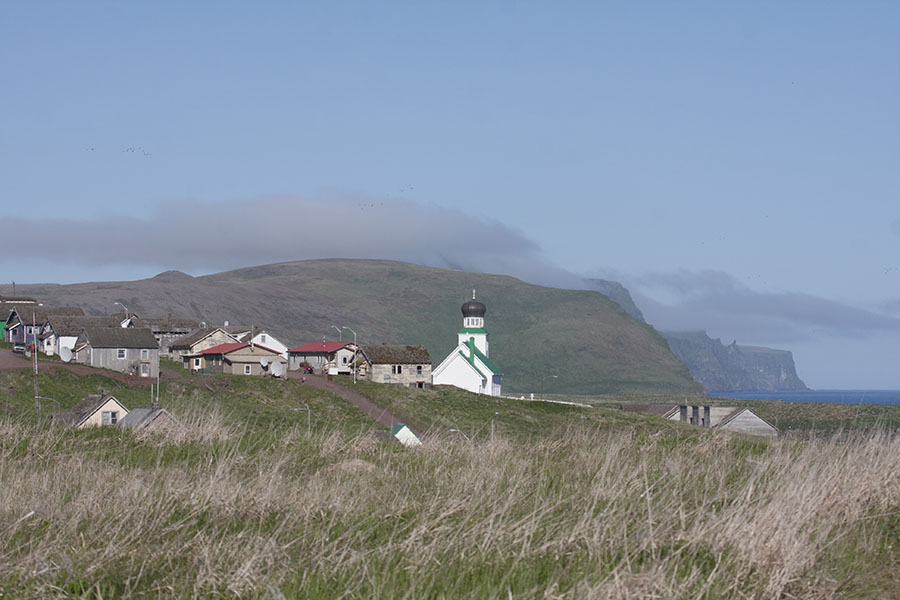Erin Lefkowitz was part of the Alaska Maritime National Wildlife Refuge’s field team working on St. George Island this past summer. Many thanks for sharing this report, Erin:
Another field season on St. George has come to a close, and we are very happy to be able to give a mostly positive report for our study species. This summer we studied five ledge-nesting seabirds (Red-legged Kittiwake, Black-legged Kittiwake, Thick-billed Murre, Common Murre and Red-faced Cormorant) and one crevice-nesting seabird (Least Auklet). Seabirds are “indicator species” – species whose population health can tell us about broader ecosystem conditions. Because kittiwakes, murres, cormorants and auklets all feed in different parts of the food web (for example: Least Auklets dive to catch plankton, and kittiwakes feed on fish at the sea surface), following the degree of population success of all five species provides us with a more in-depth understanding of the overall health of the Bering Sea ecosystem.
We looked at three primary measures of species health: reproductive success, survival rate and diet composition. Reproductive success was measured by observing the timing and success of nest-making, egg-laying, chick-hatching, and chick-fledging. Survival rates are determined by using binoculars and spotting scope to “re-sight” easy-to-read color bands on birds banded in previous years, which gives us an estimate of how many birds are surviving from year to year. Diet composition was determined by collecting regurgitated samples from adult kittiwakes and auklets returning to their nest sites.
Red- and Black-legged Kittiwakes
Both kittiwake species staged a comeback this year, and the first Red-legged Kittiwake egg was found on 20 May – a full week earlier than ever before recorded by the Fish and Wildlife Service. Dense and persistent early-season fog put somewhat of a damper on the regular observation of the ledge-nesting kittiwakes; however, once the fog lifted we found an abundance of eggs and eventually chicks. Both kittiwake species had a successful breeding season – a big relief following the near complete breeding failures observed since 2015. With so many chicks in nests, we were able to trap and band 76 new kittiwakes with (relative) ease.
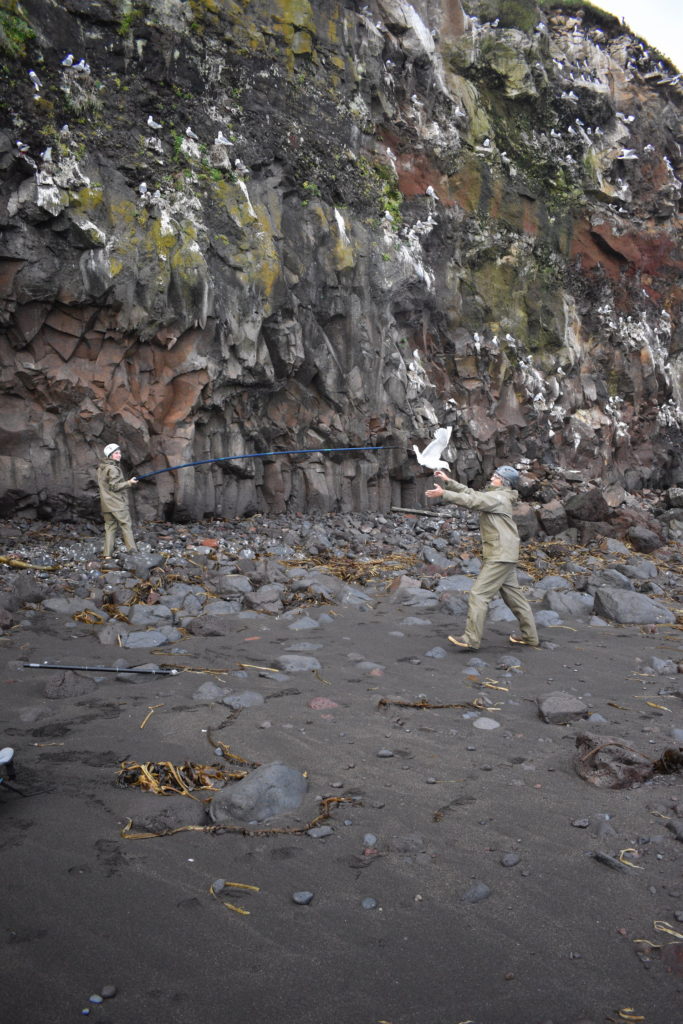
Kittiwake banding on St. George Island. Photo by Kacey Srubas, USFWS 2019.
Least Auklets
Least Auklet population declines continued this year. Three day-long counts on Ulakaia Ridge produced record low numbers of auklets, with only about half as many birds seen as last year. These apparent declines were further supported by Mark Merculief’s observations of greatly reduced swarms of Least Auklets flying between the sea and Ulakaia.
That said, productivity efforts fared somewhat better than in recent years. This year we followed 56 crevices, of which 19 were new crevices found this season. Thirty-five crevices had eggs, 24 of which hatched. Of those, ten chicks were observed until their fledge date (when they are old enough to leave the nest), and there were reports of fledged chicks seen crossing the road as they made their way down from Ulakaia to the sea. We even found one chick in a puddle right outside the Washhouse door.
Thick-billed Murre and Common Murre
The murres arrived at St. George on schedule (at the end of April) and were observed flying in long V-formations composed of hundreds of individuals – typically a sign of a promising breeding season ahead. Contrastingly in the last few years of sporadic breeding success, murres were observed flying in V-formations of only about 10-15 birds. Although egg-laying took place about one week later than average, both Thick-billed and Common Murres had an average breeding year. However, Common Murres were few and far between at our study plots. We found only 20 eggs to follow, and overall population numbers on the island seem to be declining.
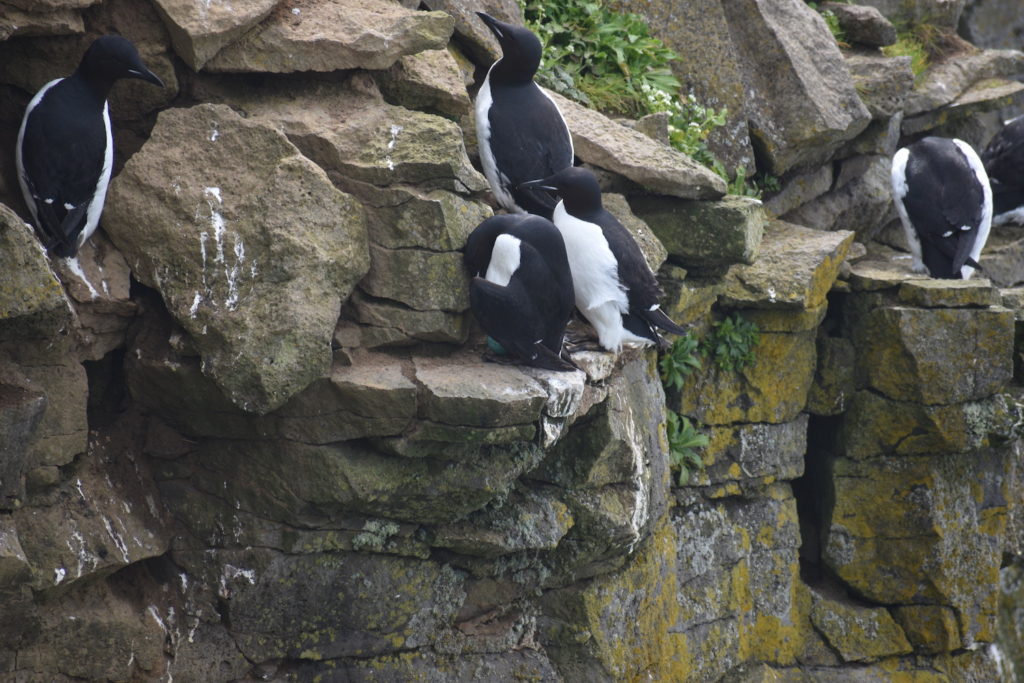
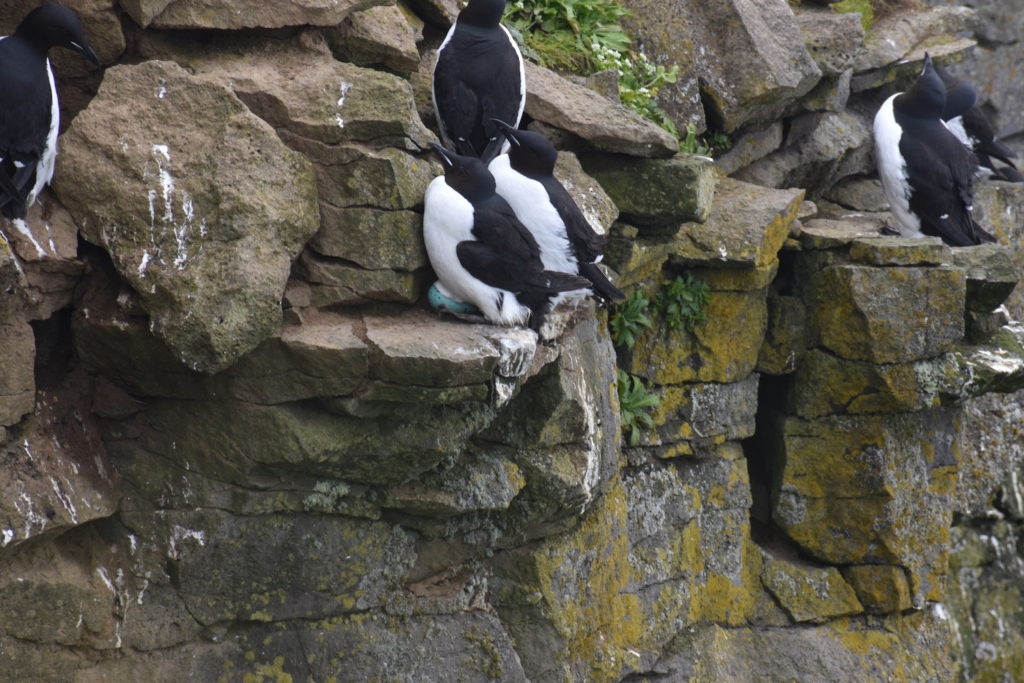
A Thick-billed Murre seen laying an egg. Photos by Kacey Srubas, USFWS 2019.
Red-faced Cormorant
This year we conducted “boom-bust” surveys of Red-faced Cormorants during both the early and late nesting periods, providing us with a general idea of how the local population is faring. Unfortunately, overall breeding success was below average this year, but we were still excited to see some well-grown cormorant chicks spilling over the edges of their crowded nests by the end.
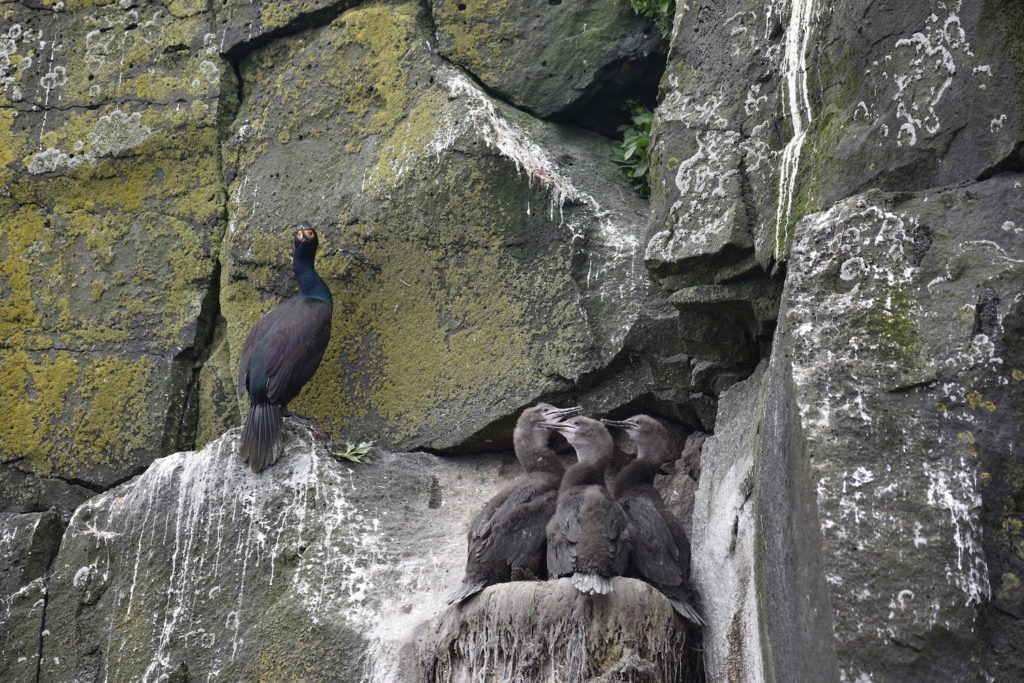
Red-faced cormorant adult and chicks. Photo by Kacey Srubas, USFWS 2019.
Compared to the last few years of generally poor reproductive success, it was a year of improvement for many of the St. George seabirds and the crew was excited to witness it. We really enjoyed working with everyone on the island, and look forward to following both the successes and failures of the birds in the coming years.

